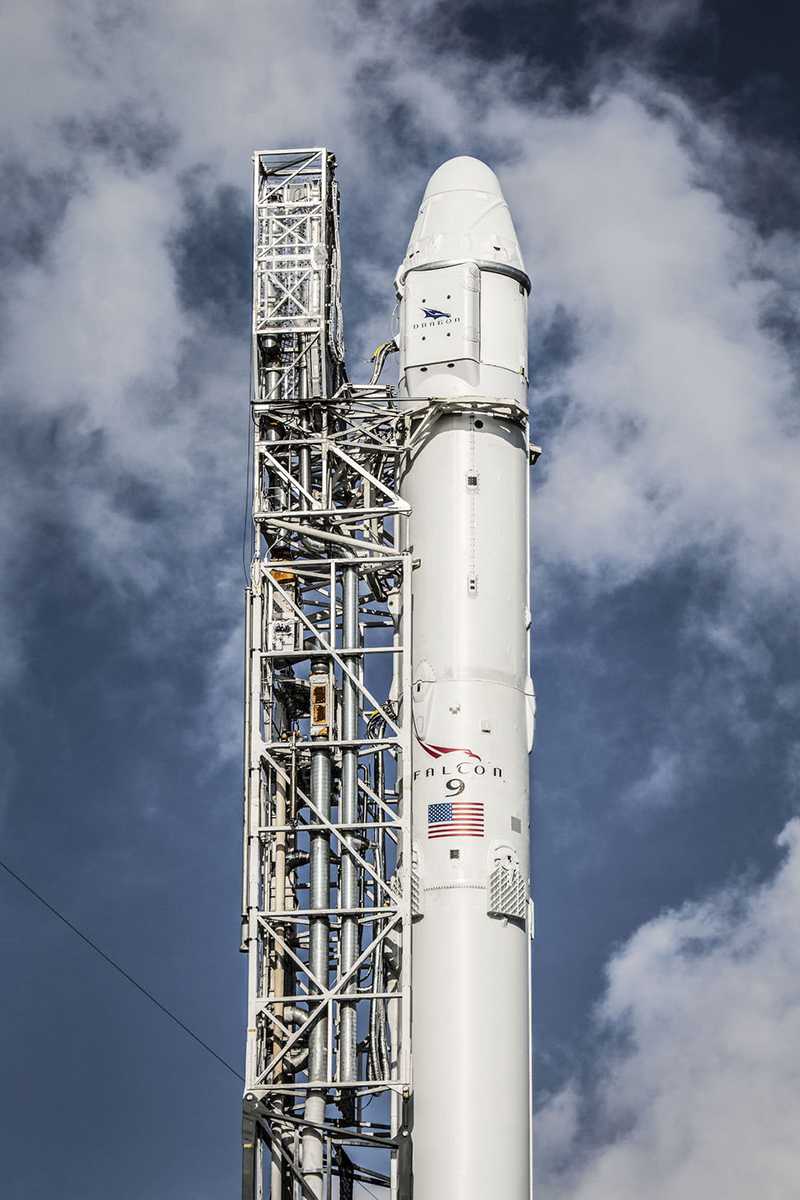A white plume enveloped SpaceX’s Falcon 9 just before the rocket exploded, destroying ISS-bound cargo and the company’s infallibility minutes after take off on Sunday morning.
Sunday’s explosion is the 3rd failed attempt to resupply the International Space Station in less than a year. It follows the loss of two cargo spacecraft by American-based Orbital Sciences and Russia’s space program Roscosmos. The Falcon 9 explosion is SpaceX’s first delivery failure after six successful launches.
4,000 lbs of food, hardware and experiments were destroyed with the Dragon cargo capsule. Three astronauts — one American and two Russians — currently man the ISS, and additional personnel will soon fly up to bring the station to its full capacity of six. ISS food reserves mitigate the lost consumables, but science experiments and destroyed airlock upgrades will shift mission timetables and may complicate the station’s future operations.
Analysis:
NASA keeps the ISS stocked for resupply failures, so no astronauts will starve anytime soon. The trouble however is not in orbital diets — SpaceX’s failure again raises critical questions on America’s private-space gamble, as NASA looks to prepare private companies to send American astronauts into low Earth orbit by 2017.
The Falcon 9 explosion is the third failed ISS resupply mission in less than a year. Two of those failures were by American private companies — Orbital Sciences Corporation and Space Exploration Technologies. Millions of dollars and years of scientific research are present in a launch’s manifest, and back-to-back American failures spell considerable loss from both an economic and scientific standpoint.
The most important loss from SpaceX’s Sunday explosion might be the destruction of a spacecraft docking adapter. NASA awarded $6.8 billion to SpaceX and Boeing to develop next-generation spacecraft capable of carrying American astronauts into low Earth orbit by 2017. The Space Station’s docks need to be upgraded to accept these new vehicles, and the first of two adapters was supposed to arrive from Sunday’s launch for installation later this year. It remains to be seen how the mission schedule will be affected by the loss.
The Sunday explosion casts renewed doubt on America’s private-space gamble. Orbital Sciences and SpaceX are NASA’s only ISS resupply partners. Both have shelved future launches for the immediate future to understand why their rockets failed, leaving ISS resupply missions to the Russian and Japanese space agencies. NASA’s gamble on private industry may one day result in significant savings and easily accessed outer space, but that outcome will never come true if U.S. entrepreneurship is beaten by foreign dependability.
The root cause of SpaceX’s launch problem will be fixed, and American industry will soon continue its ISS contributions. However, the ability to repeatedly launch successful resupply missions is a critical milestone before human spaceflight. There is very little time between now and 2017 to find and fix any problems present in American industry’s launch capabilities; let’s hope Sunday’s failure teaches a valuable lesson.
John Rangel is an aerospace engineering senior and the science and technology editor for The Battalion.
Death of a dragon
July 1, 2015
Photo by Courtesy
This explosion is the third attempt to resupply the International Space Station that has failed
Donate to The Battalion
Your donation will support the student journalists of Texas A&M University - College Station. Your contribution will allow us to purchase equipment and cover our annual website hosting costs.


























